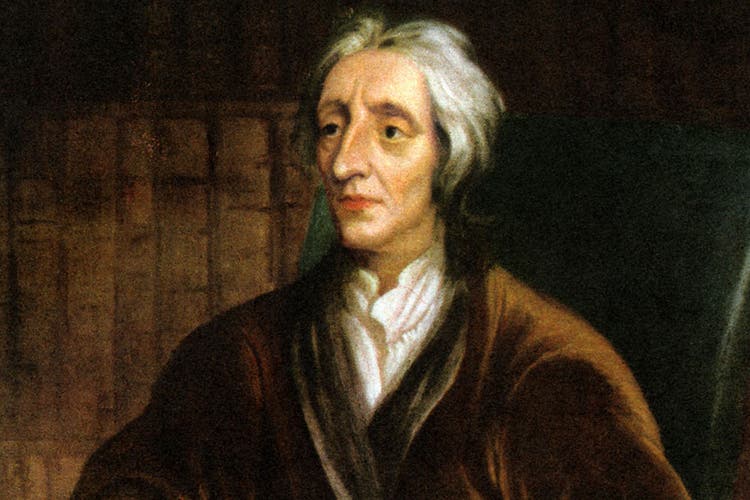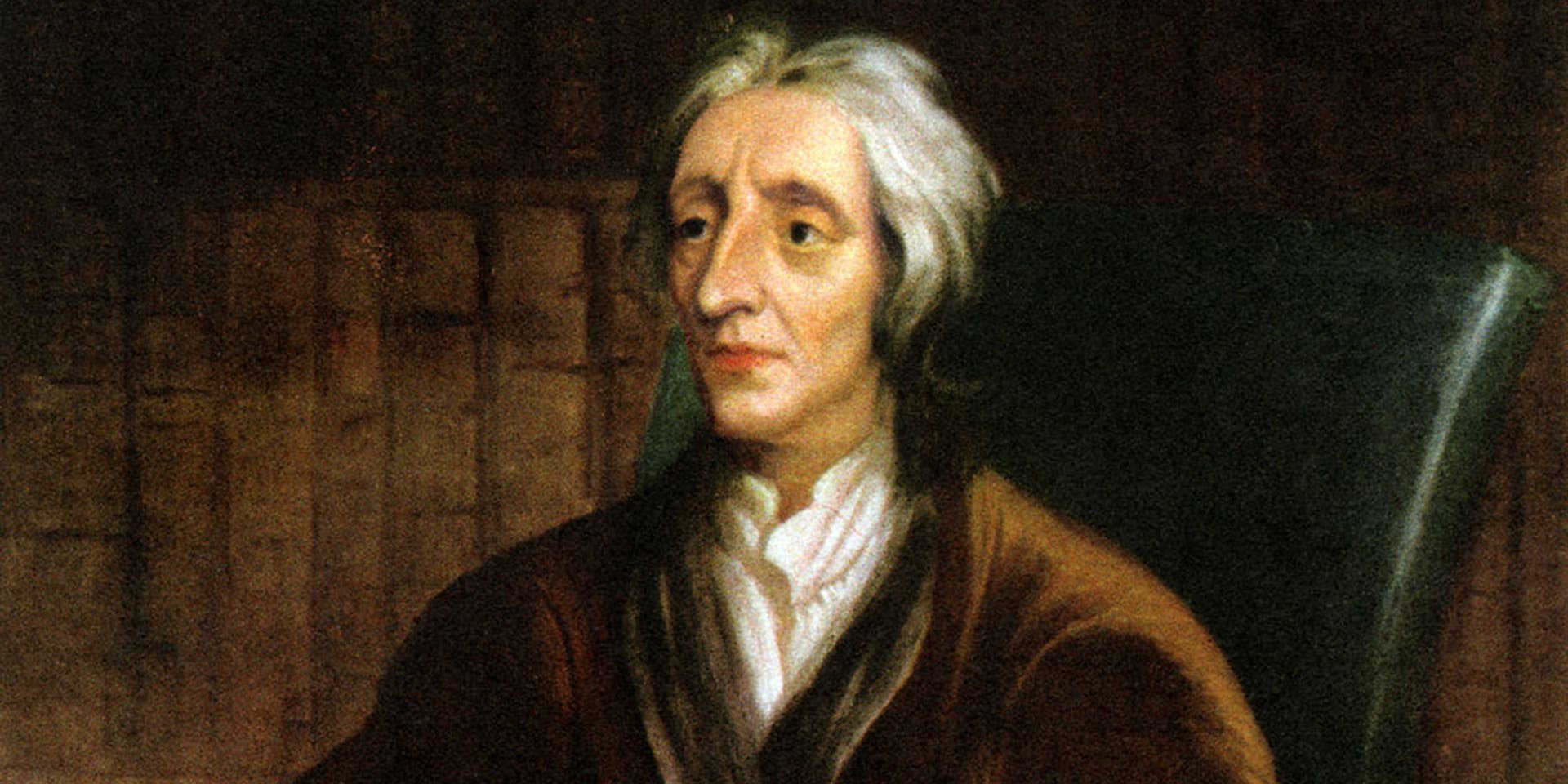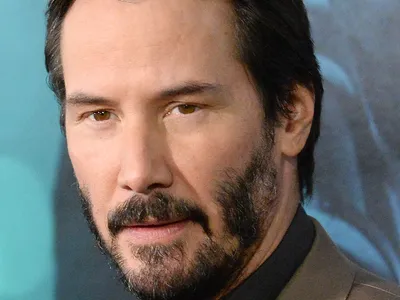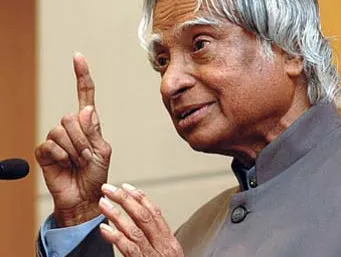Keanu Reeves Biography
Keanu Reeves Keanu Reeves
Keanu Reeves spins out at Indianapolis Motor Speedway in pro auto racing debut
Keanu Reeves (born September 2, 1964, Beirut, Lebanon) is a Canadian actor who found his greatest success in comedy, science-fiction, and action movies.
Quick Facts
In full: Keanu Charles Reeves
Born: September 2, 1964, Beirut, Lebanon (age 60)
Reeves’s mother was an English performer and costume designer, and his father was a Hawaiian geologist. They divorced when he was a young child, and he lived with his mother. The family moved first to Sydney, then to New York City, and finally to Toronto, where Reeves grew up. He struggled in school and attended four different high schools, one of which was focused on the arts, before leaving to pursue an acting career. His first professional appearance was in a 1984 episode of the comedy series Hangin’ In.
Stick figure illustrations holding hands with the Canadian flag.
Britannica Quiz
Spot the Canadian Quiz
Following more roles in TV movies and shows, Reeves made his film debut as a hockey player in Youngblood (1986), set in the world of junior hockey in Canada. Later that year he gained notice for his portrayal of a disaffected teen in the bleak drama River’s Edge and as the son of an alcoholic father (Andy Griffith) in the TV movie Under the Influence. Reeves appeared in several movies over the next two years, most prominently Dangerous Liaisons (1988), before starring in the slacker comedy Bill & Ted’s Excellent Adventure (1989), about two high-school students who time-travel for a history project. The movie was an unexpected and enduring hit. Later in 1989 Reeves also acted in Ron Howard’s Parenthood.
After providing Ted’s voice in the 1990 animated series Bill & Ted’s Excellent Adventures, Reeves starred in three movies in 1991, playing an FBI agent in Kathryn Bigelow’s Point Break and a male prostitute in Gus Van Sant’s My Own Private Idaho, which also starred River Phoenix, and reprising the role of Ted in the sequel Bill & Ted’s Bogus Journey. He later appeared in Kenneth Branagh’s Much Ado About Nothing (1993). Reeves made several disappointing movies before playing a bomb expert in Speed (1994). The thriller was a blockbuster, and it made him an action star.
Reeves then appeared in a series of films that failed to connect with both critics and moviegoers. These included the science-fiction movie Johnny Mnemonic (1995), the romantic drama A Walk in the Clouds (1995), and the crime comedy Feeling Minnesota (1996). Somewhat more successful was The Devil’s Advocate (1997), in which he played a lawyer who falls under the spell of the Devil (Al Pacino). In 1999 Reeves reached a new level of stardom with his portrayal of Neo in the sci-fi cult classic The Matrix (1999). The blockbuster, which was also critically acclaimed, launched a hugely successful franchise that included two sequels (both 2003).
Continuing to pursue diverse roles, Reeves appeared in the sports movies The Replacements (2000) and Hardball (2001) before playing a supporting role in the romantic comedy Something’s Gotta Give (2003) and in the coming-of-age drama Thumbsucker (2005). He also starred as a demonologist in Constantine (2005) and a would-be bank robber in Henry’s Crime (2010). In 2013 he made his directorial debut with Man of Tai Chi (2013), about an underground martial-arts fight club; he also starred in the drama. Reeves then received praise for his performance as a classic antihero in the title role of John Wick (2014). The movie was a huge hit, and sequels followed (2017, 2019, and 2023).
Get Unlimited Access
Try Britannica Premium for free and discover more.
Reeves’s later films included The Whole Truth (2016), To the Bone (2017), Destination Wedding (2018), and Always Be My Maybe (2019). In 2020 he returned to his first movie franchise, starring in the well-received Bill & Ted Face the Music. Reeves turned to another iconic series when he reprised the role of Neo in The Matrix Resurrections (2021).
Pat Bauer
The Editors of Encyclopaedia Britannica
Geography & Travel
Cities & Towns
Cities & Towns H-L
Hollywood
district, Los Angeles, California, United States
Also known as: Tinseltown
Written and fact-checked by
Article History
Hollywood sign
Hollywood sign The Hollywood sign in Los Angeles.
Top Questions
What is Hollywood?
Where is Hollywood?
When was Hollywood founded?
Recent News
Oct. 5, 2024, 12:57 PM ET (AP)
Keanu Reeves spins out at Indianapolis Motor Speedway in pro auto racing debut
Hollywood, district within the city of Los Angeles, California, U.S., whose name is synonymous with the American film industry. Lying northwest of downtown Los Angeles, it is bounded by Hyperion Avenue and Riverside Drive (east), Beverly Boulevard (south), the foothills of the Santa Monica Mountains (north), and Beverly Hills (west). Since the early 1900s, when moviemaking pioneers found in southern California an ideal blend of mild climate, much sunshine, varied terrain, and a large labour market, the image of Hollywood as the fabricator of tinseled cinematic dreams has been etched worldwide. The first house in Hollywood was an adobe building (1853) on a site near Los Angeles, then a small city in the new state of California. Hollywood was laid out as a real-estate subdivision in 1887 by Harvey Wilcox, a prohibitionist from Kansas who envisioned a community based on his sober religious principles. Real-estate magnate H.J. Whitley, known as the “Father of Hollywood,” subsequently transformed Hollywood into a wealthy and popular residential area. At the turn of the 20th century, Whitley was responsible for bringing telephone, electric, and gas lines into the new suburb. In 1910, because of an inadequate water supply, Hollywood residents voted to consolidate with Los Angeles.
John Barrymore and Greta Garbo in “Grand Hotel” (1932), directed by Edmund Goulding.
Britannica Quiz
Hollywood Films in the 1930s Quiz
In 1908 one of the first storytelling movies, The Count of Monte Cristo, was completed in Hollywood after its filming had begun in Chicago. In 1911 a site on Sunset Boulevard was turned into Hollywood’s first studio, and soon about 20 companies were producing films in the area. In 1913 Cecil B. DeMille, Jesse Lasky, Arthur Freed, and Samuel Goldwyn formed Jesse Lasky Feature Play Company (later Paramount Pictures). DeMille produced The Squaw Man in a barn one block from present-day Hollywood Boulevard and Vine Street, and more box-office successes soon followed. Hollywood had become the centre of the American film industry by 1915 as more independent filmmakers relocated there from the East Coast. For more than three decades, from early silent films through the advent of “talkies,” figures such as D.W. Griffith, Goldwyn, Adolph Zukor, William Fox, Louis B. Mayer, Darryl F. Zanuck, and Harry Cohn served as overlords of the great film studios—Twentieth Century-Fox, Metro-Goldwyn-Mayer, Paramount Pictures, Columbia Pictures, Warner Brothers, and others. Among the writers who were fascinated by Hollywood in its “golden age” were F. Scott Fitzgerald, Aldous Huxley, Evelyn Waugh, and Nathanael West.
After World War II, film studios began to move outside Hollywood, and the practice of filming “on location” emptied many of the famous lots and sound stages or turned them over to television show producers. With the growth of the television industry, Hollywood began to change, and by the early 1960s it had become the home of much of American network television entertainment.
Hollywood Bowl
Hollywood BowlHollywood Bowl, Los Angeles.
Among the features of Hollywood, aside from its working studios, are the Hollywood Bowl (1919; a natural amphitheatre used since 1922 for summertime concerts under the stars), the Greek Theatre in Griffith Park (also a concert venue), Grauman’s Chinese Theatre (with footprints and handprints of many stars in its concrete forecourt), and the Hollywood Wax Museum (with numerous wax figures of celebrities). The Hollywood Walk of Fame pays tribute to many celebrities of the entertainment industry. The most visible symbol of the district is the Hollywood sign that overlooks the area. First built in 1923 (a new sign was erected in 1978), the sign originally said “Hollywoodland” (to advertise new homes being developed in the area), but the sign fell into disrepair, and the “land” section was removed in the 1940s when the sign was refurbished.
Many stars, past and present, live in neighbouring communities such as Beverly Hills and Bel Air, and the Hollywood Forever Cemetery contains the crypts of such performers as Rudolph Valentino, Douglas Fairbanks, and Tyrone Power. Hollywood Boulevard, long a chic thoroughfare, became rather tawdry with the demise of old studio Hollywood, but it underwent regeneration beginning in the late 20th century; the Egyptian Theatre (built in 1922), for example, was fully restored in the 1990s and became the home of the American Cinematheque, a nonprofit organization dedicated to the presentation of the motion picture.
The Editors of Encyclopaedia Britannica
This article was most recently revised and updated by Pat Bauer.
Entertainment & Pop Culture
Movies
film
Also known as: cinema, film, movie, moving picture
Written by
,
•All
Fact-checked by
Last Updated: Sep 9, 2024 • Article History
Doctor Zhivago
Doctor Zhivago David Lean (sitting atop a ladder) during the filming of Doctor Zhivago (1965).
Top Questions
What is a film?
What are the different types of films?
What are some of the major film festivals?
film, series of still photographs on film, projected in rapid succession onto a screen by means of light. Because of the optical phenomenon known as persistence of vision, this gives the illusion of actual, smooth, and continuous movement.
Also called: motion picture or movie
Key People: Lenny Kravitz Kevin Bacon Leslie Odom, Jr. Vince Vaughn George Takei
Related Topics: history of film found footage neo-noir rating mumblecore
On the Web: Library of Congress – Origins of Motion Pictures (Sep. 09, 2024)
(Read Martin Scorsese’s Britannica essay on film preservation.)
A popular form of mass media, film is a remarkably effective medium for conveying drama and evoking emotion. The art of motion pictures is exceedingly complex, requiring contributions from nearly all the other arts as well as countless technical skills (for example, in sound recording, photography, and optics). Emerging at the end of the 19th century, this new art form became one of the most popular and influential media of the 20th century and beyond. See also “the history of film.”
(Read Lillian Gish’s 1929 Britannica essay on silent film.)
Publicity still with Humphrey Bogart and Ingrid Bergman from the motion picture film “Casablanca” (1942); directed by Michael Curtiz. (cinema, movies)
Britannica Quiz
Best Picture Movie Quote Quiz
As a commercial venture, offering fictional narratives to large audiences in theatres, film was quickly recognized as perhaps the first truly mass form of entertainment. Without losing its broad appeal, the medium also developed as a means of artistic expression in such areas as acting, directing, screenwriting, cinematography, costume and set design, and music.
(Read Alfred Hitchcock’s 1965 Britannica essay on film production.)
Essential characteristics of film
Get Unlimited Access
Try Britannica Premium for free and discover more.
In its short history, the art of motion pictures has frequently undergone changes that seemed fundamental, such as those resulting from the introduction of sound. It exists today in styles that differ significantly from country to country and in forms as diverse as the documentary created by one person with a handheld camera and the multimillion-dollar epic involving hundreds of performers and technicians.
A number of factors immediately come to mind in connection with the film experience. For one thing, there is something mildly hypnotic about the illusion of movement that holds the attention and may even lower critical resistance. The accuracy of the film image is compelling because it is made by a nonhuman, scientific process. In addition, the motion picture gives what has been called a strong sense of being present; the film image always appears to be in the present tense. There is also the concrete nature of film; it appears to show actual people and things.
No less important than any of the above are the conditions under which the motion picture ideally is seen, where everything helps to dominate the spectators. They are taken from their everyday environment, partially isolated from others, and comfortably seated in a dark auditorium. The darkness concentrates their attention and prevents comparison of the image on the screen with surrounding objects or people. For a while, spectators live in the world the motion picture unfolds before them.
Still, the escape into the world of the film is not complete. Only rarely does the audience react as if the events on the screen are real—for instance, by ducking before an onrushing locomotive in a special three-dimensional effect. Moreover, such effects are considered to be a relatively low form of the art of motion pictures. Much more often, viewers expect a film to be truer to certain unwritten conventions than to the real world. Although spectators may sometimes expect exact realism in details of dress or locale, just as often they expect the film to escape from the real world and make them exercise their imagination, a demand made by great works of art in all forms.
Francis Ford Coppola: The Godfather
Francis Ford Coppola: The GodfatherSalvatore Corsitto (left) and Marlon Brando in The Godfather (1972), a film directed by Francis Ford Coppola.
The sense of reality most films strive for results from a set of codes, or rules, that are implicitly accepted by viewers and confirmed through habitual filmgoing. The use of brownish lighting, filters, and props, for example, has come to signify the past in films about American life in the early 20th century (as in The Godfather [1972] and Days of Heaven [1978]). The brownish tinge that is associated with such films is a visual code intended to evoke a viewer’s perceptions of an earlier era, when photographs were printed in sepia, or brown, tones. Storytelling codes are even more conspicuous in their manipulation of actual reality to achieve an effect of reality. Audiences are prepared to skip over huge expanses of time in order to reach the dramatic moments of a story. La battaglia di Algeri (1966; The Battle of Algiers), for example, begins in a torture chamber where a captured Algerian rebel has just given away the location of his cohorts. In a matter of seconds that location is attacked, and the drive of the search-and-destroy mission pushes the audience to believe in the fantastic speed and precision of the operation. Furthermore, the audience readily accepts shots from impossible points of view if other aspects of the film signal the shot as real. For example, the rebels in The Battle of Algiers are shown inside a walled-up hiding place, yet this unrealistic view seems authentic because the film’s grainy photography plays on the spectator’s unconscious association of poor black-and-white images with newsreels.
Fidelity in the reproduction of details is much less important than the appeal made by the story to an emotional response, an appeal based on innate characteristics of the motion-picture medium. These essential characteristics can be divided into those that pertain primarily to the motion-picture image, those that pertain to motion pictures as a unique medium for works of art, and those that derive from the experience of viewing motion pictures.
Qualities of the film image
The primary unit of expression in film is the image, or the single shot. The attribution of magical properties to images has a long history. This association is well documented among many primitive peoples, and it is even reflected in the term magic lantern as a synonym for the film projector. Any image taken out of the everyday world and projected onto a screen to some extent appears to become magically transmuted. This magical quality helps to explain the enthusiastic reception accorded such early films as La Sortie des usines Lumière (1895; “Workers Leaving the Lumière Factory”), which were merely photographic records of commonplace scenes in France in the 1890s by the French film pioneers the Lumière brothers.
Intensity, intimacy, ubiquity
The qualities of intensity, intimacy, and ubiquity have been singled out as the salient characteristics of the motion-picture image. Its intensity derives from its power to hold the complete attention of the spectator on whatever bit of reality is being shown. Outside the theatre, a person’s attention is usually dispersed in the endless surrounding reality, except for sporadic moments of concentration on what is selected for closer scrutiny. In the cinema one is compelled to look at something that not the viewer but the filmmaker has selected, for reasons that are not always immediately apparent. This quality of intensity becomes most noticeable when the camera remains fixed on something for a longer time than seems warranted, and spectators gradually become acutely conscious of their loss of volition over their own attention. This technique is not often used but is very effective when used well.
The intimacy of the film image is related to the camera’s ability to see things in greater detail than the eye can. This ability is demonstrated in long-distance shots through a telephoto lens as well as in close-ups. At the beginning of the Japanese film Suna no onna (1964; Woman in the Dunes), for example, a pervading theme of the film is indicated by shots of grains of sand many times enlarged.
The impression of ubiquity—being everywhere at once—is achieved in part by the camera’s apparent freedom to move from place to place or to approach or withdraw instantaneously. No less important to this illusion of ubiquity is the effect achieved by editing, which allows countless images representing a long, elaborate action to be presented in a comparatively short film or sequence, such as that exemplified by the opening of The Battle of Algiers. The geographic and temporal authority of the image even permits credibility to be given to sequences representing the past, the future, and dreams.
Particularity
Other equally important characteristics of the film image may be singled out. One of these is its particularity. The language of words lends itself to generalization and abstraction. In themselves, words such as man or house do not suggest a particular man or a particular house but men and houses in general, and more abstract terms such as love or dishonesty have even less-precise associations with specific things. Motion pictures, on the other hand, show only particular things—a particular man or a particular house. In this way a film image may be less ambiguous than the language of words but also less evocative, less likely to be enriched by imagination, association, or recollection. Despite its particularity, however, the motion-picture image may also be ambiguous in that it shows but does not explain. It does not in itself tell what it means, and people instinctively search for meanings in images. This is why commentary is thought to be essential in tying down precise meaning in educational films. On the other hand, many evocative documentaries, from Robert Flaherty’s Nanook of the North (1922) to Errol Morris’s Fast, Cheap & Out of Control (1997), abjure commentary, thus forcing the spectator to take in the remarkable and untranslatable specific sights and sounds they collect. The particular insistence of given photographed objects also explains why the juxtapositions of montage are so effective—the spectator compulsively searches for the reason behind a particular sequence of images.
Neutrality
Another characteristic of the film image is its neutrality. The world people see around them is strongly influenced by their emotions and their interests. A plumber fixing pipes in a museum may not see the masterpieces around him or her, while an angry person may hear an insult where none was intended. The camera and the microphone, however, are thought to reproduce images and sounds without feeling. Although focus, directionality, and other technological factors limit what can be seen and heard, audiences are prepared to believe that the motion picture itself is nonhuman or even superhuman in its passive reception of information. Courts of law, for example, are more likely to accept film as evidence of an occurrence such as a bank robbery than they are to accept an artist’s sketch or a journalist’s report of the same incident. When a film appears to be charged with emotion, it is usually because the director has carefully manipulated the images to give this illusion. In everyday life, the eyes follow the mind; in the cinema, the mind follows the eyes.
Characteristics of the medium
Four characteristics may be stressed as factors that differentiate the motion-picture medium, either in degree or in kind, from other mediums for works of art: luminosity, movement, realism, and montage.
Luminosity
The intense brightness of the picture projected by powerful light onto a coated screen in itself transforms the most mundane element of reality. The appeal of a luminous picture is attested by efforts of advertisers to achieve luminous effects in posters and displays. The luminosity of the motion-picture image also results in a considerable range of tone, between the brightest highlight and the deepest black. In both black-and-white and colour films, the most delicate gradations in the image are therefore possible.
Movement
As a feature of the motion picture, movement is so obvious that its central importance is sometimes forgotten. The motion picture has much in common with the graphic arts, but the added dimension of movement transforms it, allowing a narrative or a drama to unfold in time in a way no other graphic art can. Both in filmmaking and in film appreciation, movement must constantly be borne in mind: composition in the motion picture is kinetic rather than static. It is not a single colour but the cumulative effect that matters, not a single situation but a developing plot. The composition within any frame, or exposure, of a motion picture is as important as the relationship of that frame to those that precede and follow it.
Realism
Another essential element of the motion-picture image is that it gives an impression of reality. Whether in a drama enacted expressly for the camera or in a documentary film of an event at which the camera just happened to be present, this feeling of realism deriving from motion-picture photography accounts for much of the force of motion pictures. Animated films, which lack this element of photographic realism, tend to be taken as fantasies.
The attempt of the motion picture to reproduce three-dimensional reality on a flat screen presents the same problems and opportunities that are encountered in still photography and in painting. The standard camera lens, in fact, is constructed to produce visual effects precisely similar to those achieved by painters using the principles of perspective that were developed during the Renaissance.
Cinematic realism is most fully heightened when the images are accompanied by synchronous sound, whereby a second sense, hearing, ratifies what the eyes see. Although reproduced sound can be manipulated with regard to distance, timbre, clarity, and duration, in combination with photographed moving images, it forcefully brings alive its subject as present in a way unavailable to the other arts of representation.
Montage
Perhaps the most essential characteristic of the motion picture is montage, from the French monter, “to assemble.” Montage refers to the editing of the film, the cutting and piecing together of exposed film in a manner that best conveys the intent of the work. Montage is what distinguishes motion pictures from the performing arts, which exist only within a performance. The motion picture, by contrast, uses the performances as the raw material, which is built up as a novel or an essay or a painting, studiously put together piece by piece, with an allowance for trial and error, second thoughts, and, if necessary, reshooting. The order in which the segments of film are presented can have drastically different dramatic effects.
Several major contributions to the theory of montage were made by Soviet directors. After the Russian Revolution of 1917, Soviet films were encouraged for their propaganda value, but film stocks were scarce. Soviet directors carefully studied the films of D.W. Griffith and other masters to make the most effective use of their own meagre resources. One of those early Russian directors, Lev Kuleshov, conducted an experiment involving identical shots of an actor’s expressionless face. He inserted it in a film before a shot of a bowl of soup, again before a shot of a child playing, and still again before one of a dead old woman. An unsuspecting audience, asked to evaluate the actor’s performance, praised his ability to express, respectively, hunger, tenderness, and grief.
Sergei Eisenstein, who excelled both as a director and as a teacher, based much of his theory of film on montage, which he compared to the compounding of characters in Japanese writing. The character for “dog” added to the character for “mouth,” he noted, results not merely in “dog’s mouth” but in the new concept of “bark”; similarly, film montage results in more than the sum of its parts. Still another great Russian director, Vsevolod Pudovkin, also stressed the importance of the carryover in the spectator’s mind. Only if an object is presented as part of a synthesis, he said, is it endowed with filmic life.
Three types of montage may be distinguished—narrative, graphic, and ideational. In narrative montage the multifarious images and scenes involve a single subject followed from point to point. In a fiction film, a character or location is explored from multiple angles while the audience builds a comprehensive image of the situation being explored or explained. Graphic montage occurs when shots are juxtaposed not on the basis of their subject matter but because of their physical appearance. Some avant-garde works depend on the spectator’s ability to match the graphic relations of assorted images, such as the people, the objects, and the shapes of numerical and alphabetical figures in Fernand Léger’s Le Ballet mécanique (1924) or the torpedoes, swimming seals, and blimps in Bruce Conner’s A Movie (1958). In graphic montage, cutting usually occurs during shots of movement rather than ones of static action. This cutting on motion facilitates the smooth replacement of one image by the next. In ideational montage, two separate images are related to a third thing, an idea that they help to produce and by which they are governed. In Stachka (1924; Strike), for example, the director Eisenstein, to whom the theory of ideational montage is credited, effectively conveys the idea of slaughter by intercutting a shot of cattle being butchered with shots of workers being cut down by cavalry.
Publicity still from the motion picture film “The Terminator” (1984); directed by James Cameron. (cinema, movies)
Britannica Quiz
Match the Quote to the Movie Quiz
These three types of montage seldom appear in their pure form. Most ideational montage proceeds on the basis of the graphic similarity of its components, as does narrative montage when relying on graphic cutting to cover its movement. Similarly, the graphic matches between torpedoes, seals, and blimps in A Movie ultimately construct an idea of movement toward explosion and destruction. Besides the complications brought about by the intermixing of these types, the addition of the sound track multiplies the possibilities and effects of montage. Eisenstein and Pudovkin referred to such possibilities as “vertical” montage, opposing it to the “horizontal” unrolling of shot after shot. Because sound permits the establishment of relations between what is seen and heard at each moment, the film image can no longer be said to be a self-contained unit; it interacts with the sound that accompanies it. Sound relations (including dialogue, music, and ambient noise or effects) may be built in constant rapport with the image track or may create a parallel organization and design that subtends what is seen. In all, montage appears to be the most extraordinary factor differentiating the motion picture from the other arts, and it is the one often singled out as the basis of the medium. Nevertheless, many films, including those of Mizoguchi Kenji of Japan, Roberto Rossellini of Italy, and Jancsó Miklós of Hungary, rely not on montage but on the medium’s unique qualities of luminosity, movement, and realism to convey their power and beauty.
The film experience
The viewing of motion pictures began as an experience limited to a one-person audience. Soon after, the advent of motion-picture projection transformed the medium predominantly into a form of theatrical entertainment viewed by large numbers of people simultaneously. By the end of the 20th century, new technologies had made possible a wide variety of viewing options, ranging from the solitary spectator sitting at home to audiences of thousands in a single space or of millions over many venues.
Kinetoscope
KinetoscopeInterior view of the Kinetoscope, a device developed chiefly by Thomas Edison’s technician W.K.L. Dickson in 1891 to show Kinetograph motion pictures. Inside the Kinetoscope’s cabinet a continuous loop of film would be threaded on a series of rollers. An eyepiece was set into the top of the cabinet.
The Kinetoscope, the first motion-picture viewing device, was invented by Thomas Edison and William Dickson in 1891. It allowed only a single spectator at a time to look through a peephole at the tiny moving images inside the machine. Within several years, projectors capable of enlarging the image on a screen in a theatrical space had been developed. Projected motion pictures soon rendered the peephole viewers obsolete, although the latter could still be found for decades as novelties in penny arcades and amusement parks.
Why do movie theatres serve popcorn?
Why do movie theatres serve popcorn?Learn how popcorn became a popular snack to eat at the movies.
See all videos for this article
The motion picture thrived in the first half of the 20th century as a mass medium centred on theatrical exhibition. Attending motion pictures became a social experience shared among friends or in an audience of strangers. Although the physical setting was similar to live events such as stage or concert performances, fundamental differences arose in the viewing of mechanically reproduced images rather than living persons. Motion-picture audiences were more informal in dress and demeanour. Eating and drinking during screenings became common; indeed, the sale of items such as popcorn and soft drinks proved more lucrative to many exhibitors than box-office admissions. Consecutive repeat showings permitted patrons to enter and leave in the middle of programs, giving rise to the expression “This is where I came in,” which became obsolete and largely unknown by the end of the 20th century, when theatres were cleared after each screening.
When television emerged as a competing home-entertainment medium after World War II, theatrical film attendance suffered a severe decline. However, older movies became a staple of television programming, and television in turn began to serve as a significant advertising medium for promoting new films. While the television presentation of motion pictures varied in different countries, in the United States it was common on commercial broadcast channels to divide up the screening with frequent commercial breaks. After the introduction in the mid-1950s of CinemaScope and other widescreen formats for motion pictures in theatrical release—a technological innovation intended to highlight the value of the large-screen theatre experience in contrast to the then small-screen home medium—these works were later altered for television release. In a technique called “panning and scanning,” the original versions of widescreen films were rephotographed, sometimes with new camera movements added, to record significant screen events for the narrower television frame.
In the later decades of the 20th century, as theatrical movie attendance stabilized at much lower numbers than before World War II, the television became the predominant exhibition venue for films. In the 1980s the home-viewing experience dramatically expanded with the emergence of cable television, with channels playing up-to-date motion pictures without commercial breaks, and especially with the development of the videocassette recorder (VCR), a device that could record television signals on cassettes of magnetic tape as well as play prerecorded cassettes. Movie companies released recent and older films in videocassette format, and neighbourhood video stores sprang up to rent or sell cassettes. Home viewers could choose what they wanted to see and take home motion pictures on video in much the same way as they might select a book to read or recorded music to listen to.
Newer technologies introduced at the end of the 20th and the beginning of the 21st centuries broadened the home viewing of motion pictures still further. Systems delivering television signals via satellite or digital cable offered hundreds of channels, many of them playing films continuously. The 1990s witnessed the introduction of the DVD (digital video disc, or digital versatile disc), which converts analog audio and video signals into binary data that can then be read by a low-power laser. The DVD was a medium for recording, storing, and playing movies that provided significantly more space for data than the videotape cassette—so much more, in fact, that even early DVDs contained motion pictures in both their original widescreen theatrical-release format (i.e., in “letterboxed” form, a term referring to the black bands that appear above and below the image on a television with a roughly square aspect ratio of 4 to 3) and in the “panned and scanned” version. Sound tracks were made available in original or dubbed languages, and a variety of supplemental materials included voice-over commentaries from directors and other creative personnel, documentaries on the making of the film, preview trailers, screen tests, and more. The Blu-ray format, adopted as an industry standard in 2008, promised optical discs with even greater data capacity. The first decade of the 21st century also brought the widespread adoption of video-on-demand (VOD), in which home viewers could request instant delivery of motion pictures of their choice directly to their television or computer screens. Internet-based VOD played an increasing role in the distribution and circulation of motion pictures, especially with the rise of such streaming services as Netflix. Also significant was P2P (peer-to-peer) file sharing, which was seen as a threat by film studios. While theatrical exhibition continued to play a significant role and theatres retained their value as social gathering places that could present large-scale images, the dominant trend in the experience of motion pictures gave home viewers increasing control over what films to see, when to see them, and how to see them. Viewers were able to stop the image, enlarge it, reverse it, fast forward, skip to desired scenes, and take charge as never before over the process of screening itself.
Expressive elements of motion pictures
Many observers have seen in films a means of expression comparable to language. The French poet and filmmaker Jean Cocteau, for example, called the cinema “picture writing.” The language of film, however, is not the language of words, even though spoken dialogue has been an integral part of motion pictures since the late 1920s, and written captions were usually required to explain the action before that. It is primarily in the qualities of its images and sounds that the expressivity of the cinema must be sought. Certain basic traits of motion pictures may operate with the logic of natural language, but few theorists have held that cinematic expression follows rules like those of natural language. As Christian Metz, one of the foremost film theorists of the 20th century, argued, it is not linguistics so much as poetics that should serve as a model for those interested in understanding or explaining how a film works.
Various codes of expression have, nevertheless, been shown to operate naturally or to have been inculcated, and their effects can be calculated. Such codes and effects occur in all aspects of moviemaking and can most readily be categorized into those affecting cinematography, editing, sound, the script, acting, and design.
Cinematographic expression
The filmmaker has a number of ways of modifying the camera’s neutrality and thereby the “reality” that is conveyed to the audience. It is largely by means of these devices that the motion picture becomes such an expressive medium. Several of these expressive techniques should be emphasized. First, there is framing—that is, carefully selecting what will be included within each frame of the film and what will be excluded. Second, there is scale, the size and placement of a particular object or a part of a scene in relation to the rest, a relationship that is determined by the placement of the camera. Third is camera movement, or the lack of it, during shooting. Fourth, there are the peculiar advantages of either colour or black-and-white photography that can be exploited. Finally, through the cinematographer’s skill and knowledge of laboratory processes, other highly expressive techniques can be achieved. Each of these means of expression will be discussed below.
Framing
The process of framing is intended to eliminate what is unessential in the motion picture, to direct the spectator’s attention to what is important, and to give it special meaning and force. Each frame of film, which corresponds in shape to the image projected on the screen, forms the basis for a graphic composition in the same way that the frame of a painting encloses the area in which the painting must be organized.
United States
More From Britannica
United States: Motion pictures
Several different ratios of frame width to frame height, called aspect ratios, have been used in motion pictures. The most common, known as the Academy ratio, is 1.33 to 1, or 4 to 3, a ratio corresponding to the dimensions of the frame of 35-mm film. By using 70-mm film or a special CinemaScope lens, an image with wider horizontal and shorter vertical dimensions is achieved—a proportion of about 5 to 2, or between 2.2 to 1 and 2.65 to 1. A similar effect, called wide screen, was sometimes achieved without the expensive equipment required for CinemaScope by using 35-mm film and masking the top or bottom or both, giving a ratio of 1.75 to 1, or 7 to 4. Although some theatres in the 1970s were enlarged and widened to accommodate 70-mm images, a trend toward smaller theatres fixed the image ratio close to 1.85 to 1 in the United States and 1.66 to 1 in Europe.
Seven Samurai
Seven SamuraiShimura Takashi (left) and Mifune Toshirō (second from right) in Seven Samurai (1954), directed by Kurosawa Akira.
The moderate elongation provided by the Academy ratio has proved most versatile for achieving standard compositional effects. For example, an expansive feeling is easily rendered when small-scale figures in the foreground are shot against a towering sky, as in Days of Heaven. In the wide CinemaScope dimension, the tension established between the outward movement of the composition and the rectangle of the screen can readily be lost; nevertheless, early fears about wide screen’s insensitivity to intimate love scenes proved to be unfounded, at least in the hands of careful cinematographers. A number of foreign directors, notably Kurosawa Akira (Japan), François Truffaut (France), and Miklós Jancsó (Hungary), achieved stunning effects in CinemaScope by overcoming the fear of moving the camera, as seen in, respectively, the battle scenes of Shichinin no samurai (1954; Seven Samurai), the bicycle ride in Jules et Jim (1961), and the nonstop camera dance of Még kér a nép (1972; Red Psalm). Wide screen calls for an altered aesthetic, because the spectator’s eye is invited to roam the visual field, making connections that in the standard ratio are more tightly determined.
Regardless of its ratio, the frame may be divided to show two or more scenes at the same time. This technique is traditionally used for credit sequences, musical interludes, or moments when the presentation on a single screen of two or more simultaneous occurrences results in comic interrelationships, although frame division can be used to dramatic or purely aesthetic effect, as in John Frankenheimer’s Grand Prix (1966).
An effective use of framing consists of temporarily or permanently excluding a vital part of the action. Offscreen space may be said to function more actively in cinema than in painting or the theatre. For example, the camera may remain fixed on the hero while the villain is perceived only as a voice saying “Hands up!” or, in a science-fiction film, the camera may linger on the horror expressed by the victim before revealing the monster that is causing it.
Very strong dramatic effects may be obtained by oblique framing—that is, by turning the camera sideways so that the image on the screen appears askew. This was done in the early Russian film The Ghost That Never Returns (1929), in which a prison riot shown by oblique framing gives the impression that the building is being pushed over. Some directors, such as Britain’s Carol Reed, made this a trademark (The Third Man, 1949).
Scale
King Kong
King KongA scene from King Kong (1933), directed by Merian C. Cooper and Ernest B. Schoedsack.
Since scale in the cinema constantly changes from shot to shot, the spectator can easily be deceived about the size of objects. When appearing next to enormous tables and chairs, for instance, actors can be made to look like midgets or children, as in the Stan Laurel and Oliver Hardy comedy Brats (1930). By contrast, in King Kong (1933) a small-scale model of New York City was used to give the illusion of the actual city under attack by a giant gorilla. Scale may have a marked effect on the emotional tone of a scene. In the distance an actor may seem lonely, remote, helpless, pathetic; close up the performer may appear powerful, threatening, bestial. The scale of shots for artistic purposes ranges from an extreme long shot (the widest view on the smallest scale), with houses or ships appearing as tiny dots on the horizon; through medium shots, two shots (i.e., a shot of convenient size to include two actors), and others; to the extreme close-up, with part of a face, an eye, or a fist filling the screen (the most restricted view on the largest scale). Telescopic or microscopic shots beyond these extremes are often of scientific rather than artistic interest.
Orson Welles: Citizen Kane
Orson Welles: Citizen KaneStar and director Orson Welles in the film Citizen Kane (1941).
Different scales are occasionally juxtaposed in a single shot to produce an unmistakable dramatic or rhetorical effect. In Orson Welles’s Citizen Kane (1941), significant characters are repeatedly framed in the right or left foreground while in the background an action takes place that disturbs that character or that that character somehow controls. The gigantic political poster of Kane that rises behind the podium on which he, in the foreground, makes a speech promising to ruin his rival, Gettys, becomes suddenly the size of a postage stamp when the shot changes to one in which Gettys is in the foreground looking down on the insignificant speaker from a balcony. Through this use of different scales, Gettys is shown to have power over the action.
As has been noted, the camera exaggerates perspective, and this exaggeration adds to the dramatic effect. It is most striking in an ordinary still photograph of an enormous hand or a sunbather’s giant feet that were close to the camera lens. In cinematography, the director ordinarily minimizes the effect of this distortion but occasionally uses it in an extreme form. In Easy Rider (1969), for instance, it was used to give an atmosphere of hallucination and nightmare to a drug-taking session, and in Brazil (1985) it was used continuously to promote an atmosphere of paranoia and nightmare.
Scale is affected by what precedes and follows. The close-up has its most dramatic impact coming after long or medium shots, and after many close-ups it is a relief to escape to the middle or far distance
Share this:https://whatsapp.com/channel/0029VacGoli0G0XYOubeV60L























